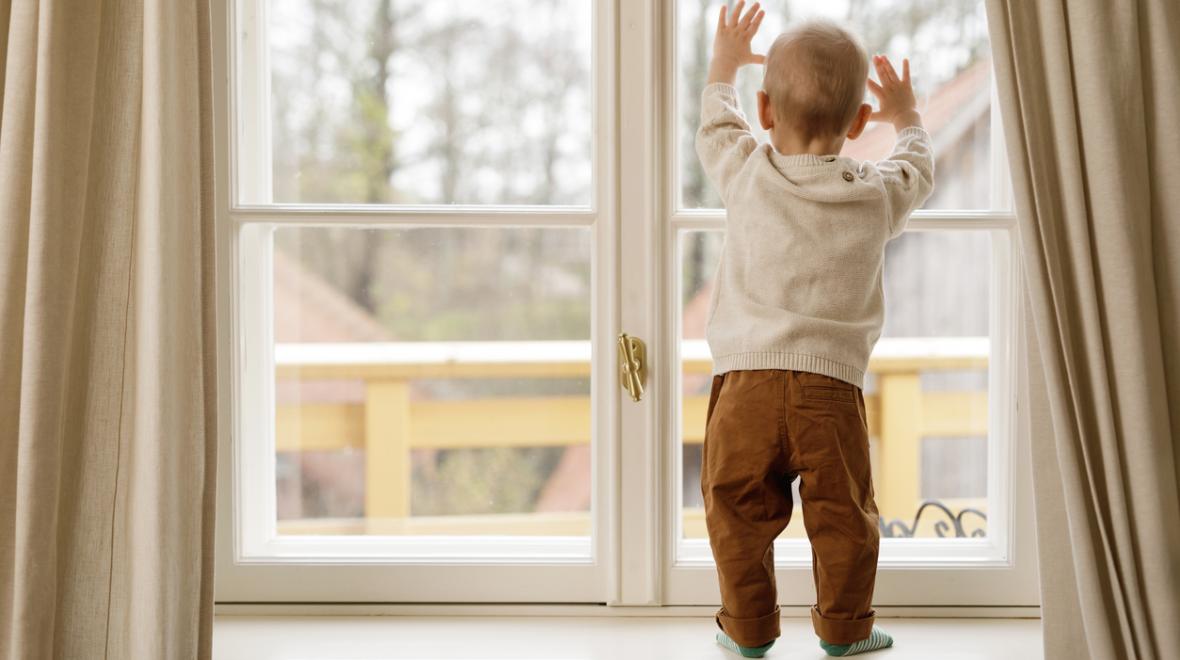
Editor’s note: This article was sponsored by Seattle Children’s Hospital.
For the dozens of Seattle-area children who fall out of a window each summer, the storylines are unsettlingly similar.
A 2- or 3-year-old child is playing near an open window, usually with a caregiver nearby. Perhaps they see something interesting outside. Maybe they climb onto a chair or table to take a closer look. Before the parent can intervene, the window screen releases and the child topples out.
“These aren’t kids throwing themselves against the screen — they’re just leaning,” says Brian Johnston, M.D., chief of pediatrics at Harborview, associate division chief for clinical services at the Department of Pediatrics at Seattle Children’s and a window fall researcher. “Usually, a parent sees the child fall out the window because they were there — that’s one of the devastating things.”
Each summer, about 50 children will be hospitalized at Harborview for these preventable injuries, Johnston says. Many more will come to the emergency department. Yet an action as simple as installing a $5 gadget — or keeping a window closed — can prevent this devastating physical and emotional trauma from happening.
A preventable injury
Across the country, thousands of young children fall out of windows every summer. Most are younger than 5, a group that is active and exploring yet unaware of potential dangers. At the same time, toddlers are typically top-heavy — they have big heads relative to their smaller bodies — and this makes them more prone to losing their balance. As a result, they often pitch headfirst out the window, Johnston says.
The height of the fall is the chief predictor of its severity. Another key factor is what lies below: soft shrubbery and grass provide a softer landing than less forgiving concrete. The most common injuries from window falls are head injuries and broken bones, Johnston notes. Most kids recover from the injuries and very few die. Still, about a quarter of these cases result in permanent damage, such as diminished cognitive function or movement issues. Even for the children who end up physically okay, the emotional trauma can linger for the patient — not to mention the caregivers.
“I’m not sure most parents recover emotionally,” says Johnston.
Since few children die from the falls, though, the ongoing problem tends to fly under the radar in most areas — with a couple of key exceptions. Perhaps the most notable is New York City, where a groundbreaking health education program called “Children Can’t Fly” was launched in the early 1970s. As a result, landlords must install window guards in apartments where a child age 10 or younger lives, a requirement that has dramatically reduced deaths and injuries from window falls in the Big Apple.
Chicago pursued an outreach-centered approach using buses, banners and radio ads to raise awareness: Windows can be a safety hazard and flimsy screens won’t prevent a fall. The program has been credited with reducing children’s window falls by 50 percent over a 15-year period.
Screens don’t protect
At Harborview, most parents whose children fell out of windows were practicing “good parenting” when the incident happened, Johnston says. They just didn’t see a screened window as the safety hazard it can be. That’s why spreading the message that screens likely won’t prevent a fall is the first step in prevention.
Screens create a false sense of safety; the window doesn’t appear to be so exposed to the ground below.
“Those screens are designed to pop out for fire escape — they’re not designed to keep kids from falling if they lean against the screen,” says Johnston.
Through his research, Johnston and colleagues examined homes where kids had fallen out versus homes where children of similar ages did not. They used a device that measured both the resilience of the screens and the force required to pop them out. The homes where a fall had occurred did have window screens that popped out more easily, they found. This may happen when screens are getting older or don’t fit as snugly. The bottom line, though: Don’t take a bet your screen will hold out. They are designed to keep insects out, not kids in.
One way to bypass the sense of false security: Imagine how you’d feel about the window and your child’s safety if the screen wasn’t there.
“If you wouldn’t leave a child alone with a wide-open window with no screen, don’t leave them alone with a screen,” he cautions.
Taking additional precautions
Of course, the easiest way to prevent these falls is to keep windows closed. That can be tough during a Seattle summer, especially since many homes don’t have air conditioning.
If a child is going to be playing near a high, open window, there are some specific steps that can minimize the risk of a tumble. If windows open from the top or bottom, choose the top. Move furniture away from windows so that children can’t climb up to access windowsills.
Modifications can also be made to the windows themselves, Johnston advises. Window stops are inexpensive devices that prevent the window from opening fully, allowing enough space for the cooler air to flow in, but not enough space for a child to escape. These gadgets should be simple enough that an adult can quickly disengage them in the event of a fire, but too complicated for a young child to figure out.
Window safety guards are considered the gold standard for preventing falls, but they’re costlier and can present aesthetic challenges (i.e., the window appears barred). Another option is installing fall prevention screens, which look like regular screens but are designed to withstand a greater weight.
Some public health experts wonder if a warming climate will result in the installation of more air conditioning units — resulting in fewer open windows. So far, though, there’s no evidence of an impact on reduced childhood window falls.
Window falls peak in July and August, in line with rising temperatures, Johnston says.
“It’s so predictable,” he says. “We are all bracing ourselves waiting for the wave of window falls we know is going to come every summer.”
Additional resources
|
|
Sponsored by: |












